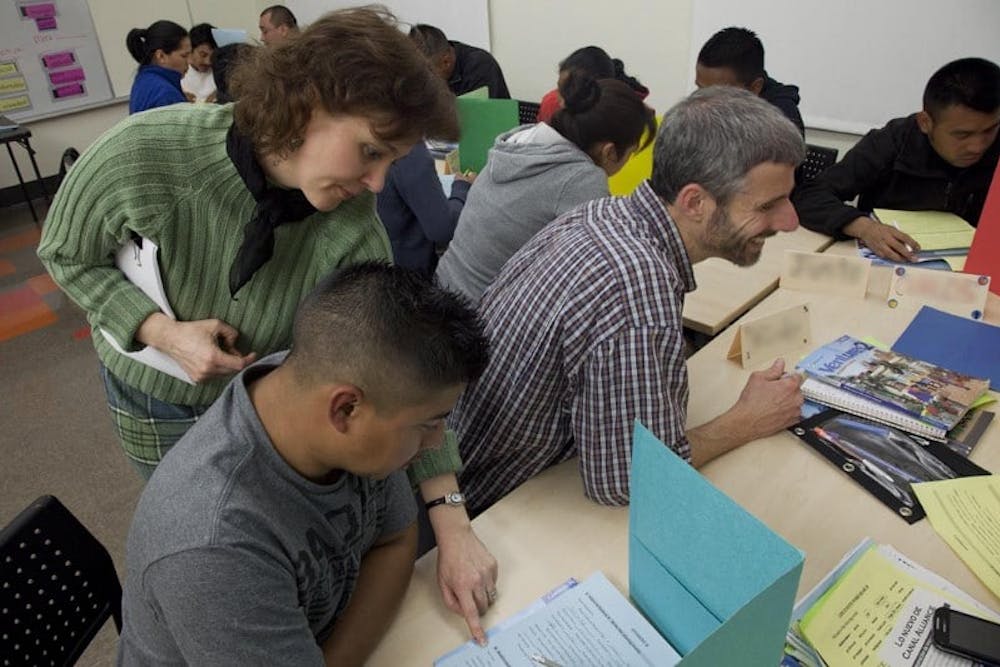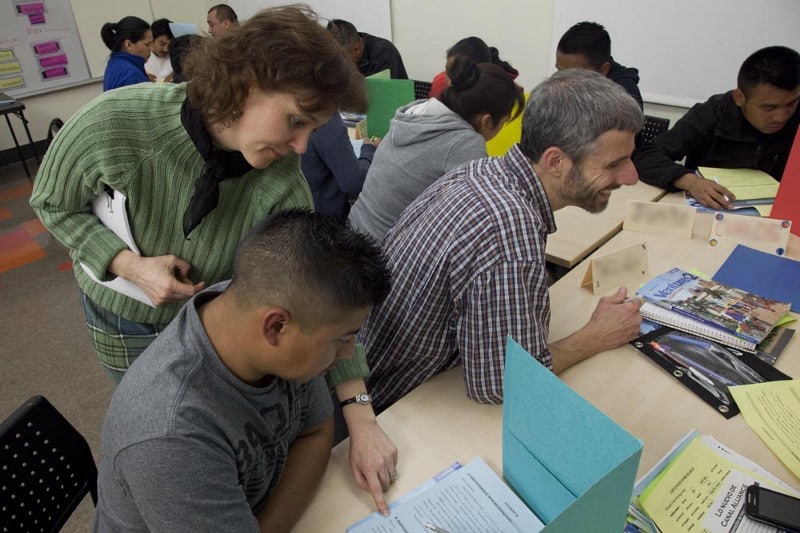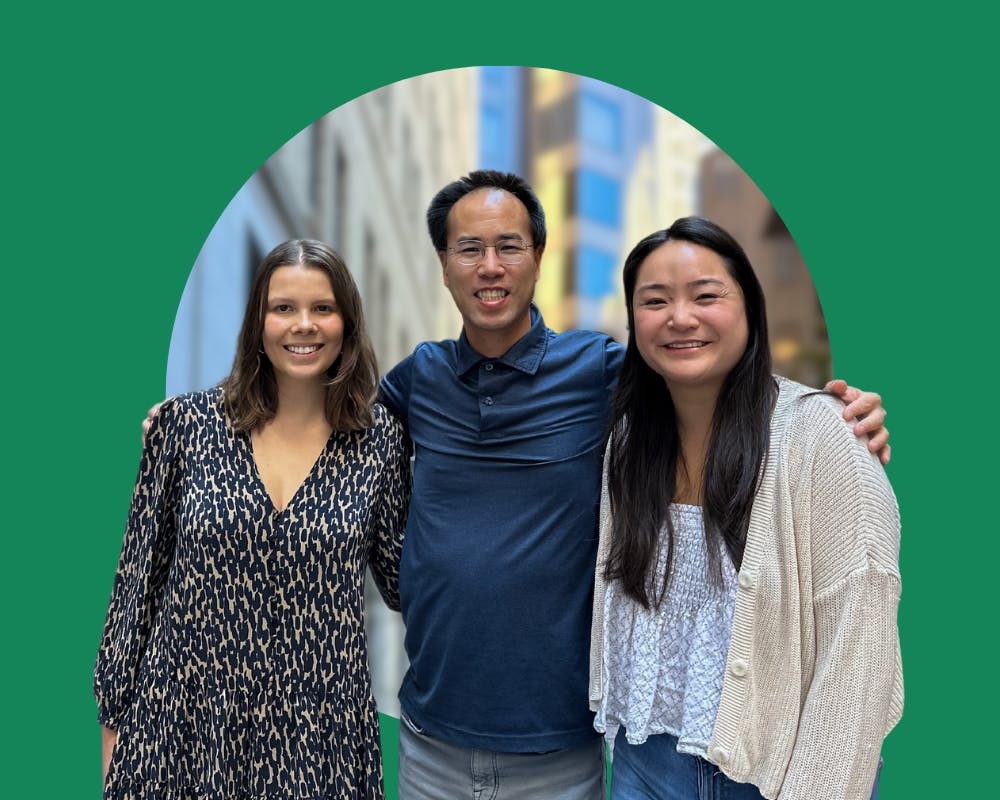
Project Legal Link (PLL), an initiative of Tipping Point Community since 2014, partners with the most effective non-profits in San Francisco to help low-income people navigate the legal system on their path out of poverty. Now housed at Bay Area Legal Aid, Project Legal Link recently received an R+D grant from Tipping Point to refine its model. We sat down with Sacha Steinberger, Project Legal Link Founding Attorney and Director, to hear all about it.
TPC: How did Project Legal Link begin?
SS: It began as an attempt to meet a clear need. Studies show that although low-income families face two to three legal issues each year, many go unidentified and only 20% are tackled with the help of a lawyer. We know that unaddressed legal challenges — evictions, damaged credit, tickets, warrants — can present fundamental barriers to moving out of poverty. But the need for legal services far outpaces availability. Compared to the one private lawyer for every 429 people in the general population, there is one legal aid lawyer for every 8,737 people living in poverty in California.
At the outset, PLL was an experiment in how to bring a much-needed legal services component to the education, employment, housing and wellness organizations that Tipping Point already supports. An early needs assessment found that frontline staff were well aware that their clients needed legal aid, but did not have the tools or training to provide it. Where most lawyers specialize in one or two areas of law, caseworkers must see their clients as a whole and attempt to resolve issues across the board. Staff members were understandably intimidated by the complexity of the legal world and unsure of how to respond in the face of issues that are as wide ranging as custody disputes, benefit denials, credit issues, and criminal record questions.
TPC: What’s unique about the legal support PLL provides?
SS: Given the lack of legal aid funding, the recent movement has been toward the self-help model — providing tools to people so they can navigate the system on their own. However, better tools are not enough for low-income clients who don’t have time, space, trust in the system, a computer at home or language skills, and who may have experienced trauma or mental health issues. They often get lost in the legal maze, and need help navigating it, even if they won’t get legal help from start to finish.
We’ve found that the deep trust inherent in the relationship between caseworkers and their clients is a powerful ingredient in providing legal services to those living in poverty. It also allows us to broaden the frame of our legal work from handling crises to also including proactive work to address the legal barriers that will, for example, keep someone from getting housed. We train staff at the organizations we work with to understand the legal system and spot issues, we offer holistic consults on any legal issue that arises in our partner non-profits, we build tools for caseworkers to use with clients, and we link clients and social service providers to the experts they need.
From the clients’ standpoint, PLL is neither self-help nor full representation. This project falls somewhere in the middle — we’re trying to get people to the lawyers they may be eligible for, and provide the tools and information they need should they not get legal representation.
TPC: What impact has the program had so far?
SS: Last year, Project Legal Link provided over 30 trainings to staff, and conducted more than 700 consults with clients and staff at a number of organizations including Homeless Prenatal Program, Compass Family Services, New Door Ventures and Larkin Street Youth Services.
With over 40 legal non-profits serving San Francisco clients, we have also built a website that helps us catalog current information and point staff and clients to it. We work behind the scenes with many legal providers to see if we can make their network more systemically accessible to low-income communities and their non-legal advocates.
Through our R+D work with Tipping Point and GRID Impact, we’re looking to go deeper and make our work more effective. We are asking: How can we better integrate our services with, and make them more available to, our social service providers? How can we best support low-income people in the Bay Area on their paths through, and beyond, poverty?
TPC: What initial insights can you share?
In my opinion, the idea of “scarcity” is the most helpful and universal insight we’ve drawn from the data. Scarcity affects each group we work with — clients, caseworkers, and lawyers. Living or working in scarcity creates tunneling on the most pressing issue in a person or family’s life, meaning that less urgent, but very important issues may be pushed to the side.
For clients, for example, if you don’t have a place to sleep tonight, then finding one will be your priority. Figuring out that you have a prior conviction on your record that’s going to be a barrier to getting stable housing is important, but it’s not front-of-mind until you have solved the initial problem. Caseworkers face time and emotional scarcity in their lives because of the demanding, all encompassing nature of their work. And lawyers suffer from knowledge scarcity on specific legal issues because of how siloed and specialized the industry can be.
We’ve already found that our current and curated referral resources are helping to reduce the cognitive burden on social service providers and legal aid lawyers by taking the hard work out of the referral process, which is a really promising sign.
TPC: The recent executive orders on immigration policy have greatly increased the workload on legal aid lawyers. From this perspective, what are the implications of the new policies?
SS: The law is shifting rapidly and there are many unknowns. The non-profit legal community is doing an amazing job at responding as quickly as possible to these changes. We have seen a large increase in inquiries from the low-income population our agencies work with, and hear a lot of fear and concern. We’re trying to collect and provide accurate information as quickly as we can, including numbers to call for help and written resources like family preparedness plans. This is where our infrastructure-building comes into play. We know the groups doing effective work on the ground right now. So we get updates, post them, and share them with our network.
If you are looking for a list of current immigration resources, go to www.projectlegallink.org, select “resources” then “post-election immigration resources.” San Francisco immigration referrals can be found on the “referrals” tab.



